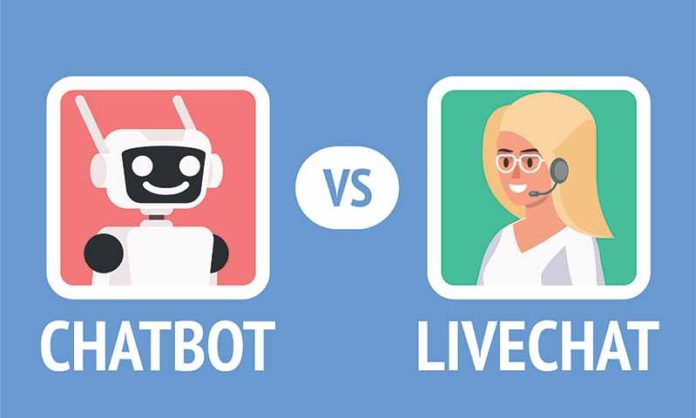Think about how potential customers interact with your business. Even if it’s not their first move, they’re likely browsing your website. They’re doing research on your products or services, reading your “about” page, and checking out your pricing.
Most importantly, those prospects are coming to your site with questions. If you’ve made your site easily navigable and created some outstanding web copy, you’re probably doing a fine job of answering some of those questions. But no matter how great your business’s website is, there is simply no substitute for interaction.
How Prospects Interact With Your Business
Our very human need to have conversations has led to the widespread adoption of chatbots on business websites. Virtual chat agents are now commonplace— we expect them to help us with anything from user account management to answering questions about our product and service offerings. Gartner predicts that this year, 25% of customer service operations will be using chatbots. We should only expect that number to rise.
While virtual chat assistants are great at helping customers reset their passwords or provide basic information, they’re not great for initiating a sales conversation. The reason is simple: they’re not human.
No matter how much logic and reason informs our buying decisions, humans are driven by emotion. That means we respond to nuance, humor, intelligence, and personality. As much as we enjoy watching contestants compete with a computer on Jeopardy!, we are more interested in following the human achievements of the best people to ever play the game.
The Limitations of Chatbots
Anyone who has interacted with a chatbot on a business website knows that they can be frustratingly limited. Even the most capable AI-driven solutions present only a thin veneer of personhood. That matters, because we don’t buy from companies— we buy from people.
On the practical side, your small business likely doesn’t have the data to teach chatbots to respond in the way you want them to. As P.V. Kannan and Josh Bernoff write in Harvard Business Review: “Training data featuring hundreds of thousands of instances can effectively power the machine learning necessary for an effective virtual agent. If your training data is sparser than that, it’s far less likely that the virtual agent can develop the smarts necessary to identify customer intents effectively.” In other words, it’s going to be tough to get your chatbot to behave like a person.
But our need for human interaction doesn’t mean we should abandon the technology that enables quick, helpful conversation. Live chat, a virtual assistant operated by a human, isn’t a compromise. It’s a solution that leverages the responsiveness we’ve come to expect with the customer service excellence we all wish we’d experience more often.
How Live Chat Powers Sales Conversations
Our live chat representative asks a simple question on our product’s website: what would you like your software to accomplish? It’s amazing how often the responses we get are formed in a simple list. Clearly, people evaluating our software expect that we’re using a bot. They form their responses in keywords they suppose the bot can understand.
But then something exciting happens: a person responds. Not just in fully-formed sentences, but with intelligent questions to help drill-down into what our potential customer is actually looking for. Before a minute has elapsed, our chat representative is having an in-depth, meaningful conversation. On a macro level, this is the promise of the internet: two humans connecting and finding common ground. From a business perspective, our live chat provides a superior customer service experience. We attribute more (and quicker) sales to this process, which helps people find what they’re looking for, and doesn’t waste their time when we’re not the right solution.
Small Business Connections
Small businesses are often characterized by personal interaction. By virtue of their size, they can form the kinds of bonds with customers that go deeper, and last longer, than simple or one-time transactions. A live chat isn’t just an extension of your sales and marketing plan— it’s an actual member of your team.
It’s up to you to decide whether live chat fits your business model and industry. You may find that you don’t have the person-power to dedicate to chatting during business hours. But take this into account: IBM finds that, “given a choice, 70% of customers today prefer messaging over voice for customer support.” That’s informative data that we’ve verified for ourselves and translated to our sales team. No matter what your customers’ sales journeys look like, it might be worth investing in live chat— and thinking twice before automating the entire process.
Chris Miles is the CEO of Miles Technologies, developer of Striven, a business management software that integrates CRM, accounting, HR, and operations to support a truly streamlined company.
Live Chat vs Chatbot stock photo by Ico Maker/Shutterstock







